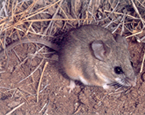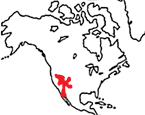|
Cactus Deermouse
(Peromyscus eremicus) |
||||
|
|
Physical
characteristics and distribution
|
|
Head and body length of Peromyscus species range from
70-170 mm and tail lengths are 40-205 mm. There are 2 subgenera
and 55 species. |
|
Description
of the brain
|
|
Animal
source and preparation
|
|
All
specimens collected followed the same preparation
and histological procedure.
|
Other Related Resources (websites and publications)
List of Specimens | Explore Collections | Brain Sections | Brain Evolution | Brain Development | Brain Circuitry | Brain Functions | Location and Use | Related Web Sites | Contact Us | Search MSU Database | Personnel | Home



